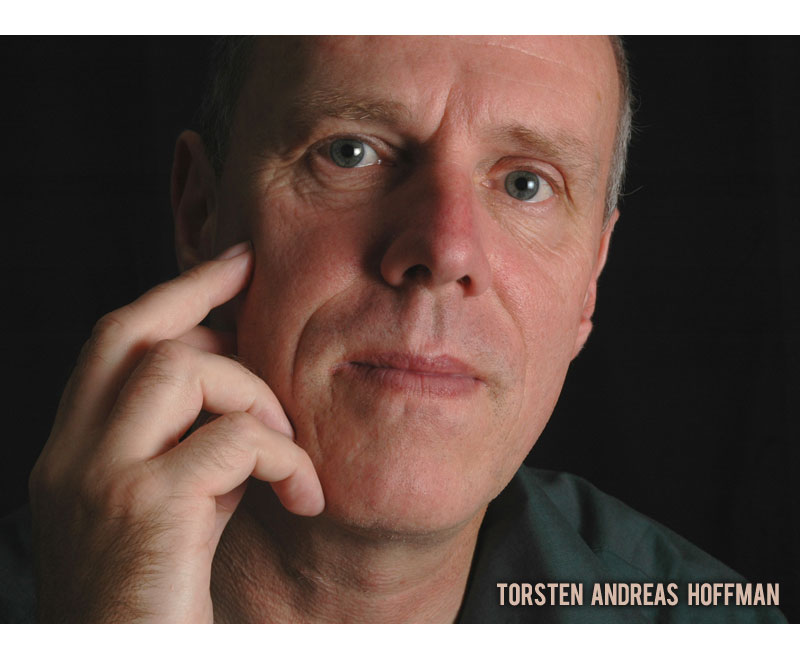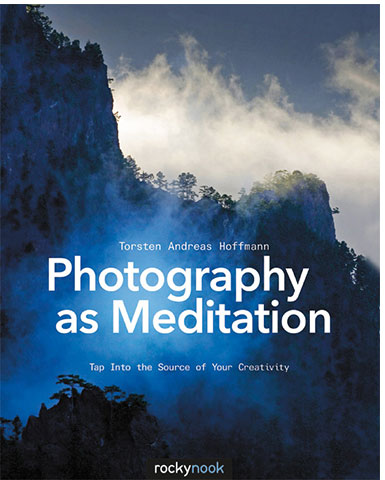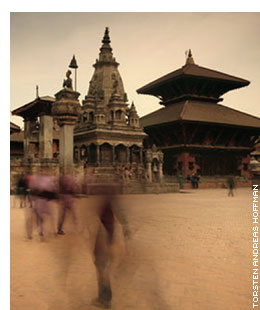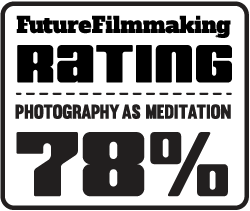In his book, Photography As Meditation, Torsten Andreas Hoffman promises to show you how to “Tap Into the Source of Your Creativity,” in order to take better pictures. Using his own photography, Hoffman states that “this book will teach you to develop your photography in a way that becomes an expression of your personality.” Now one could argue tapping into your creativity to express your personality, or, in essence, how you look at the world, is what the art of photography is all about. However, the title is not “Express Your Personality Through Photography,” it’s “Photography As Meditation.” Thus, depending on your expectations, this is where the book runs into trouble.

“I felt compelled to write the book, because I like the Zen Philosophy and I’ve done Zen meditation for about 20 years,” cites Hoffman. “Just 20 minutes per day provides me a little oasis. For the last five years I came to the understanding that photography and meditation have a lot of parallels. They both need a lot of concentration, being aware and emptiness of the mind. Both relate to being in the very present moment. Photography can help to calm the restless mind down similar to meditation.”

I’ve often found myself in a delightful, deep place when embarking on a photography project. This often occurs outside, but it can happen when I’m trying to connect to my subject in a serene studio setting. Thus, when I first laid my eyes on this new title from RockyNook, I was excited to see how Hoffman, a respected German photographer and successful author of The Art of Black and White Photography and New York, New York, utilized mediation in his photography process.
Table of Contents
» 1 Thoughts on Photography and Meditation Pg. 2
» 2 Intriguing Ideas About Zen Philosophy Pg. 6
» 3 Zen Is Not “Light” Pg. 14
» 4 The Practice of Zazen Pg. 18
» 5 Mysticism and Thoughts About the Absence of God Pg. 24
» 6 Eastern and Western Thought Pg. 36
» 7 File Drawers and Direct Experience Pg. 42
» 8 Anecdote Pg. 46
» 9 Is Photography a Life Experienced Second-Hand? Pg. 50
» 10 Photography as a Direct Experience Pg. 54
» 11 Duality Dissolved Pg. 58
» 12 Studium and Punctum Pg. 62
» 13 Impression and Expression Pg. 70
» 14 What is Depth, or the Secret of the Night? Pg. 74
» 15 Inner and Outer Landscapes Pg. 84
» 16 The Alleged Objectivity of Photography Pg. 98
» 17 Basic Moods Expressed Pg. 106
» 18 Representing Beauty without Being Shallow Pg. 138
» 19 Photography as a Puzzle Pg. 146
» 20 Street Photography Pg. 152
» 21 Creating Special Magic Pg. 182
» 22 Photography as Ink Paintings Pg. 196
» 23 Magic in the Detail Pg. 204
» 24 Abstractions Pg. 212
» 25 What is Creativity? Pg. 220
» 26 Image Design Perceived During Meditation Pg. 228
» 27 Subsequent Critical Analysis and Interpretation Pg. 244
» 28 The Path to Your Own Style Pg. 246
In fairness to Hoffman, he doesn’t structure Photography As Mediation to be precise. In fact, he reveals, “the structure is related to the idea of Zen philosophy as well, in that it’s not a logical progression where one chapter follows another. The idea being every chapter can stand alone, and the reader can even read the book from back to front.”

It takes until Chapter 15 to finally get something down that you may actually apply to your process, but Hoffman only devotes a single paragraph to asking “why are you interested in [this] location” and goes on to state “you must search for destinations to photograph that you believe will allow you to express your innermost feelings.” Again, for someone promoting mediation, these tidbits are not very deep, nor particularly insightful.
Another aspect that hinders Photography As Meditation is after reading one cursory mediative nugget in each chapter, Hoffman then propels the reader into his own photography. Sure, Hoffman is a fine photographer, and some of his images are quite stimulating, but other times he either seems to shoehorn his own photography in places that clearly would be better demonstrated by other photographers, or worse, the chapter’s “big thought’ is simply an excuse to present more of his own images. It would be fine if this was an occasional experience, but, unfortunately, it’s permissive throughout the book, and drains the energy.
“I would like very much to interpret the photographs of great photographers and write about them, however, it is complicated and costly to get the rights for outside photographs,” contends Hoffman when asked about using other photographer’s work to illustrate his points. “Therefore, for this book, I just used my own photographs. In addition, since this book is quite personal, and it’s my own philosophy, I thought my photographs would be best to illustrate the concepts I was putting forth. Although, I do allude to the Zen master and photographer John Daido Loori, and the philosopher Roland Barthes, I wanted to express my own ideas about zen photography, and thus my photographs would work best.”
It’s obvious from reading this book, and sharing the ideas with other photographers and nature videographers, a “manual” for deepening your connection to your subject would be well-received in the marketplace. A true discussion on methodologies for tapping into the spiritual nature of the process, and how you can use that genuine and profound connection to enhance your own photography, would certainly be beneficial.
“I could have given the reader more practical advice,” Hoffman admits. “A lot of people want to be clearly guided, but I think in the field of meditation and the subject matter of this book, you cannot guide people like a cooking recipe. I could do that writing a book about street photography, but not writing a book about meditation. I want to promote a certain lifestyle, and inspire others to consider some deeper thinking about photography and about themselves. What I do several times in the book is try to reveal is how important it is to come into a deeper flow in the process of photography. But you cannot force such a flow, you can only prepare good conditions. The biggest consideration is to devote a significant amount of time when choosing a location…you have to have a real connection and be touched by the environment.”
Although, this is not a practical guide, and only allows a momentary breeze to the face on this esoteric and powerful notion, it may open some doors to further exploration on the topic, especially if you’re a fan of Hoffman’s work. I did ask Hoffman about his specific process in regards to Photography As Mediation to garner a better understanding of his specific process, something that I could utilize in my own photography, “The main thing for me is to come into a state of inspiration. I just was in New York working for different projects like a big black and white art calendar. For me, it’s the same advice I provide to in the book. It’s so important to get into a state of enthusiasm, a feeling as if you see everything like it’s the first time in your life. Only if you get into that state, can you achieve extraordinary photographs. I am able to shoot quite good photographs by routine, but these photographs are not the same than the ones shot out of a state of enthusiasm. It is difficult to get into this state, but one requirement is to have a free mind. The other condition is to be in a location, which truly fascinates you. Sometimes, I suddenly see something which brings me into that state of enthusiasm, and than suddenly I see more and more things out of this wonderful state of mind, and then one photograph succeeds after the other. I am sure readers of my book will be able to come into this special mindset, I only want to help them to be conscious about this goal and to prepare the optimal conditions for getting there. It is my feeling that meditation is one practice, which will help you achieve that wonderful state of mind.”
It’s clear from his comments that Hoffman feels he’s accomplished what he set out to achieve with Photography As Meditation. Although I do feel the publication is missing certain elements, which would have made this book more successful for me personally, Hoffman does prevail in showcasing how photography can make a special spiritual connection to the soul.
RockyNook’s Photography As Meditation by Torsten Andreas Hoffman retails for $39.95 and is available now.
+ Provocative Concept
+ Attractive Layout & Design
+ Quality Production
+ Some Good Insights
– No Specific Instruction
– Only One Photographer
– Needs More Depth
– Some Chapters Seem Like “Filler”

RockyNook

